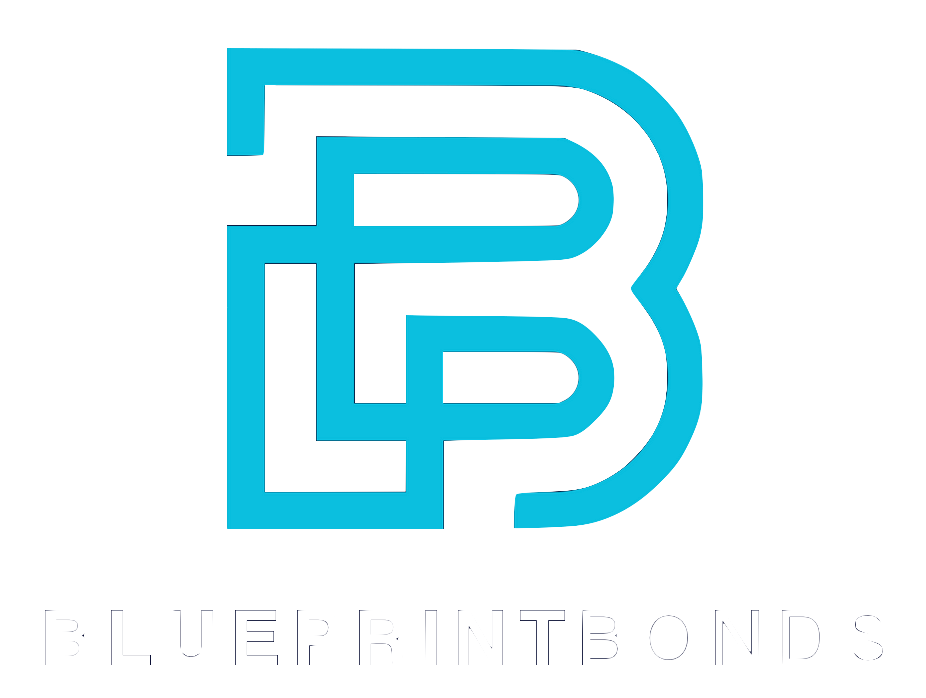When it comes to establishing a driving school in Arizona, understanding the legal requirements is crucial. One of the most significant aspects of this process is obtaining a driving school bond. This article will delve into what a driving school bond is, why it is necessary, the application process, and other essential information that driving school owners need to know.
What is a Driving School Bond?
A driving school bond is a type of surety bond required by the state of Arizona for driving schools. It serves as a financial guarantee that the school will comply with state regulations and fulfill its obligations to students and the state. Essentially, it protects consumers from potential misconduct or negligence on the part of the driving school.
In Arizona, the bond amount typically ranges from $10,000 to $25,000, depending on various factors such as the size of the school and the number of instructors employed. This bond ensures that if a driving school fails to meet its obligations, students or other affected parties can file a claim against the bond to recover their losses.
Driving school bonds are not just a regulatory requirement; they also play a crucial role in maintaining the integrity of the driving education industry. By requiring driving schools to obtain a bond, the state ensures that these institutions are financially responsible and committed to providing quality instruction. This requirement helps to foster trust between students and driving schools, as potential learners can feel more secure knowing that there is a financial safety net in place should any issues arise.
Moreover, the bond serves as an incentive for driving schools to adhere to best practices and maintain high standards of service. Schools that operate ethically and responsibly are less likely to face claims against their bond, which can also affect their reputation and ability to attract new students. In this way, the bond not only protects consumers but also encourages driving schools to invest in their programs, instructors, and overall student experience, contributing to safer roads and better-prepared drivers in the long run.

Why is a Driving School Bond Necessary?
The necessity of a driving school bond in Arizona stems from the need to protect consumers and maintain a standard of quality within the driving education industry. By requiring driving schools to obtain a bond, the state ensures that these institutions operate ethically and responsibly.
Here are a few key reasons why a driving school bond is essential:
Consumer Protection
Driving schools have a direct impact on public safety. By ensuring that these institutions are bonded, the state protects consumers from potential fraud or malpractice. If a driving school fails to deliver services as promised, students can seek compensation through the bond.
Moreover, the bond serves as a safeguard against unethical practices that could arise in the industry. For instance, if a driving school engages in deceptive advertising or fails to provide the agreed-upon instruction, the bond can be a financial recourse for students who feel wronged. This level of protection not only reassures students and parents but also encourages schools to uphold high standards of service.
Regulatory Compliance
The bond acts as a form of insurance that driving schools will adhere to state laws and regulations. This compliance is vital for maintaining the integrity of the driving education system and ensuring that all schools meet minimum standards.
In addition to enforcing compliance, the bond helps to create a level playing field among driving schools. It discourages subpar institutions from operating, as they would be unable to secure a bond due to their lack of adherence to regulations. This ultimately leads to a more robust educational environment where students can confidently choose from reputable schools that prioritize their safety and learning experience.
Building Trust
Having a bond in place helps build trust between driving schools and their students. It demonstrates that the school is committed to providing quality education and is financially responsible, which can enhance the school's reputation in the community.
Furthermore, a driving school that is bonded can use this as a marketing tool, showcasing their commitment to quality and accountability. This transparency can attract more students who are looking for reliable driving education. As word spreads about the bond's protective nature, it can lead to increased enrollment and a stronger community presence for the school, ultimately benefiting both the institution and the students it serves.
The Application Process for a Driving School Bond
Obtaining a driving school bond in Arizona involves a straightforward application process. However, it is essential to gather all necessary documentation and understand the requirements before starting. Here’s a step-by-step guide to help navigate the process:
Step 1: Research Bonding Companies
Start by researching bonding companies that operate in Arizona. Look for reputable firms that specialize in surety bonds, particularly those familiar with the driving school industry. Reading reviews and seeking recommendations can help in finding a trustworthy provider. Additionally, consider reaching out to local driving school associations or forums where industry professionals share their experiences. This can provide valuable insights into which bonding companies have a strong track record and customer service.
Step 2: Prepare Required Documentation
Once a bonding company is selected, the next step is to prepare the necessary documentation. This typically includes:
- Proof of business registration in Arizona
- Details about the driving school, including its location and services offered
- Information about the owners and instructors, including their qualifications and backgrounds
In addition to these basic requirements, it may be beneficial to compile any additional documentation that showcases the school’s commitment to safety and education, such as accident records, training manuals, or proof of insurance. This not only strengthens your application but also demonstrates your professionalism and dedication to providing quality instruction.
Step 3: Complete the Application
With the required documents in hand, complete the bond application. This may involve providing personal and business information, as well as answering questions about the driving school’s operations. The bonding company will assess the application to determine eligibility and the bond amount. Be prepared for potential follow-up questions or requests for additional information, as bonding companies often conduct thorough evaluations to ensure compliance with state regulations and industry standards. This step is crucial, as it not only affects the approval of your bond but also the terms and conditions associated with it.
Cost of a Driving School Bond
The cost of obtaining a driving school bond can vary significantly based on several factors. Generally, the premium paid for the bond is a percentage of the total bond amount, which can range from 1% to 15%. Here are some factors that influence the cost:
Credit History
The applicant's credit history plays a significant role in determining the bond premium. Those with strong credit scores may qualify for lower rates, while those with poor credit may face higher premiums. Bonding companies assess the risk associated with issuing the bond based on the applicant's financial history. This means that maintaining a healthy credit profile is not just beneficial for securing loans but is also crucial for minimizing costs associated with bonding.
Business Experience
Experience in the driving school industry can also impact the cost. Newer schools may face higher premiums due to a perceived higher risk, while established schools with a proven track record may enjoy lower rates. Additionally, the reputation of the driving school can influence the bonding process; schools that have received positive reviews and have a history of compliance with state regulations may find it easier to negotiate better terms for their bonds.
Bond Amount
The total bond amount required will directly affect the premium. A higher bond amount usually results in a higher premium, although the percentage rate may decrease as the bond amount increases. It’s essential to balance the bond amount with the associated costs when applying. Furthermore, understanding the specific requirements set by the state or local government can help driving schools determine the appropriate bond amount, ensuring they meet legal obligations while managing their financial responsibilities effectively.
Additional Considerations
In addition to the factors mentioned, the location of the driving school can also play a crucial role in determining the bond cost. Different states and municipalities may have varying regulations regarding driving school operations, which can affect the bond requirements. For instance, schools operating in densely populated urban areas may face stricter regulations compared to those in rural settings, potentially leading to higher bonding costs. Moreover, the type of vehicles used for instruction and the number of instructors employed can also influence the overall risk assessment by bonding companies, further impacting the premium rates.
Long-term Financial Planning
It’s also wise for driving school owners to consider the long-term financial implications of obtaining a bond. While the initial costs can be daunting, investing in a bond can enhance the school's credibility and attract more students. A well-bonded driving school is often viewed as more trustworthy by potential clients, which can lead to increased enrollment and, ultimately, greater revenue. Therefore, understanding the nuances of bond costs and their potential return on investment is essential for driving school operators looking to establish a sustainable business model.

Maintaining Your Driving School Bond
Once a driving school bond is obtained, it is crucial to maintain it properly to avoid lapses that could lead to legal issues or loss of license. Here are some tips for maintaining your bond:
Renewal Process
Driving school bonds typically have a set term, often ranging from one to three years. It is essential to keep track of the renewal date and initiate the renewal process well in advance. This may involve submitting updated documentation and paying the renewal premium. Additionally, some bonding companies may require proof of continued compliance with state regulations, such as updated financial statements or proof of insurance. Keeping organized records can streamline this process and ensure that you meet all necessary requirements without last-minute stress.
Compliance with Regulations
Continuously ensure that the driving school complies with all state regulations. Regularly review operational practices, instructor qualifications, and student services to maintain compliance and avoid claims against the bond. This includes staying informed about any changes in local laws or regulations that may affect your school. Participating in industry workshops or training sessions can also provide valuable insights and updates, helping you to maintain a high standard of operation and education.
Addressing Claims Promptly
If a claim is filed against the bond, it is crucial to address it promptly. Investigate the claim, gather evidence, and communicate with the bonding company. Resolving issues quickly can help mitigate financial losses and maintain the bond's integrity. Furthermore, it is advisable to have a clear protocol in place for handling claims, including designated personnel responsible for managing the situation. This proactive approach not only helps in resolving claims efficiently but also demonstrates to your bonding company that you are committed to maintaining high operational standards.
Regular Training for Staff
In addition to compliance and claims management, investing in regular training for your staff can significantly enhance the overall quality of your driving school. By providing ongoing education on the latest teaching techniques, safety protocols, and customer service skills, you can ensure that your instructors are well-equipped to deliver a superior learning experience. This not only helps in retaining students but also minimizes the risk of claims against your bond, as satisfied customers are less likely to file complaints. Consider hosting workshops or bringing in guest speakers who can provide fresh perspectives and insights into the driving education industry.
Building Strong Relationships
Another essential aspect of maintaining your driving school bond is fostering strong relationships with your students and their families. Open communication and transparency about your policies, procedures, and expectations can build trust and loyalty. Encourage feedback from students and parents, and be responsive to their concerns. By creating a supportive environment, you can enhance your school's reputation and reduce the likelihood of disputes that could lead to claims against your bond. Engaging with your community through events or partnerships can also bolster your school's image and demonstrate your commitment to safe and effective driving education.
Common Misconceptions About Driving School Bonds
There are several misconceptions surrounding driving school bonds that can lead to confusion among prospective driving school owners. Understanding these misconceptions is vital for making informed decisions.
Misconception 1: Bonds are Insurance
One common misconception is that surety bonds function like insurance. While both provide financial protection, they operate differently. A surety bond is a three-party agreement involving the principal (the driving school), the obligee (the state), and the surety (the bonding company). If a claim is made, the surety pays the claimant, but the principal is responsible for repaying the surety. This distinction is crucial because it means that driving school owners must maintain a good financial standing and adhere to regulations to avoid claims that could jeopardize their bond status.
Misconception 2: All Bonds are the Same
Not all driving school bonds are created equal. Different states may have varying requirements, and the bond amount can differ based on the size and scope of the driving school. It is essential to understand the specific requirements for Arizona and ensure compliance. For instance, Arizona may require a bond amount that reflects the potential risks associated with driving instruction, which can vary significantly from other states. Additionally, some states might have specific stipulations regarding the types of training offered, which can further influence the bond requirements.
Misconception 3: Bonds are Optional
Some may believe that obtaining a driving school bond is optional. However, in Arizona, it is a legal requirement for operating a driving school. Failing to obtain the necessary bond can result in penalties, including the inability to operate legally. Moreover, the bond serves as a safeguard for students and the public, ensuring that driving schools adhere to ethical practices and maintain a standard of quality in their instruction. This requirement not only protects consumers but also enhances the credibility of the driving school industry as a whole, fostering trust between schools and their students.
Misconception 4: The Bonding Process is Simple
Another misconception is that the bonding process is straightforward and quick. In reality, obtaining a driving school bond can involve a detailed application process, including credit checks and financial assessments. The bonding company will evaluate the driving school’s financial health, experience, and business practices before issuing a bond. This thorough vetting process ensures that only responsible and reliable driving schools are bonded, which ultimately benefits both the schools and their students. Understanding this complexity can help prospective owners prepare adequately and avoid delays in starting their operations.
Misconception 5: Bonds are a One-Time Expense
Many prospective driving school owners mistakenly believe that bonds are a one-time expense. In truth, surety bonds typically require annual renewals, which can involve additional costs. The premium for the bond may fluctuate based on various factors, including changes in the driving school’s financial situation or claims history. This ongoing financial commitment should be factored into the overall budget for running a driving school, as it can impact long-term profitability and operational planning. Being aware of these recurring costs can help owners maintain financial stability and ensure compliance with state regulations.
Conclusion
Understanding the intricacies of the Arizona driving school bond is essential for anyone looking to establish a driving school in the state. From the application process to maintaining compliance, being informed can help ensure a smooth operation. By securing a driving school bond, owners not only protect themselves but also enhance consumer trust and uphold the standards of driving education.
In summary, obtaining a driving school bond is a critical step in the establishment and operation of a driving school in Arizona. It provides financial security, ensures regulatory compliance, and fosters trust between the school and its students. By following the outlined steps and maintaining the bond properly, driving school owners can navigate the complexities of the industry with confidence.
Article By: Ryan Spalding
Licensed Insurance Agent & Bond Specialist
Contact Us

